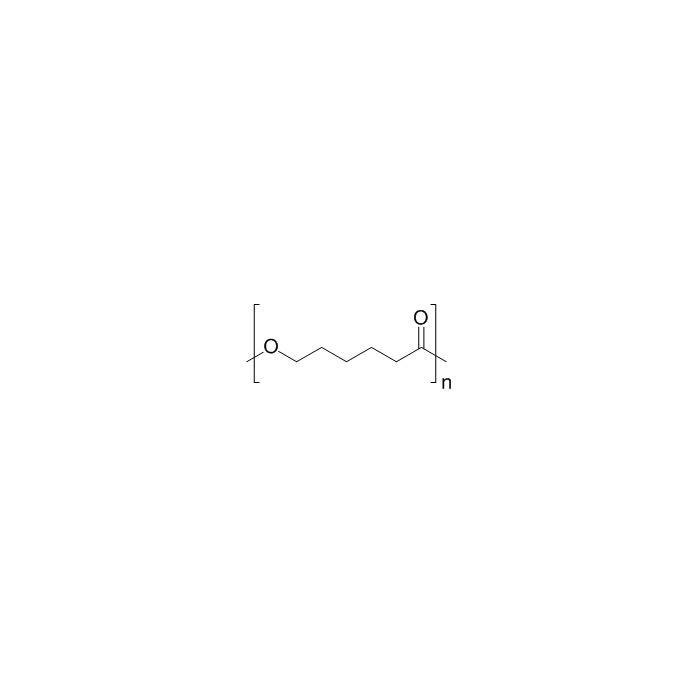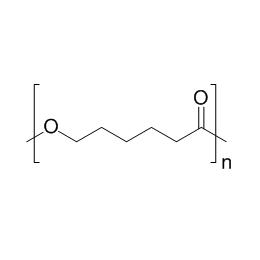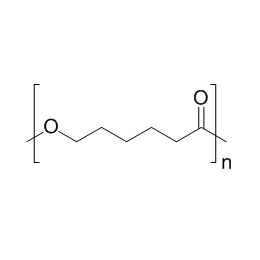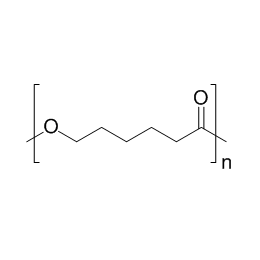Polycaprolactone, MW 37000
Polycaprolactone (PCL) is biodegradable polyester that is easy to manufacture, manipulate and blend. PCL can be used as an additive for resins to improve their processing characteristics and their end use properties. PCL adheres well to a large number of surfaces. It is easily fabricated, easily melted and is non-toxic. Additionally, PCL blends have been extensively studied to reduce cost and improve biodegradability by mixing with starch and other low cost organic fillers.
PCL as a bioresorbable polymer has received great deal of attention in use as a long term degradable implants as it can easily manipulated physically, chemically and biologically to suit a specific requirement. It is also studied as a scaffold for tissue repair via tissue engineering.
PCL is degraded by hydrolysis of its ester linkages under physiological conditions at much slower rate than polyglycolide (PGA), poly d,l-lactide (PDLA) and its copolymers.
Aydin, O., Aydin, B., Tezcaner, A., & Keskin, D. Study on physiochemical structure and in vitro release behaviors of doxycycline-loaded PCL microspheres. Journal of Applied Polymer Science, 132(14) (2015). doi.org/10.1002/app.41768
Zhang, X., Zhang, Y., Liao, J., Yu, T., Hu, R., Wu, Z., & Wu, Q. Preparation and properties of compatible starch-polycaprolactone composites: Effects of molecular weight of soft segments in polyurethane compatilizer. Journal of Applied Polymer Science, 132(32) (2015). doi.org/10.1002/app.42381
Pohlmann, A. R., Fonseca, F. N., Paese, K., Detoni, C. B., Coradini, K., Beck, R. C., & Guterres, S. S. Poly(-caprolactone) microcapsules and nanocapsules in drug delivery. Expert Opinion on Drug Delivery, 10(5), 623–638 (2013). doi.org/10.1517/17425247.2013.769956
Zhang, Q., Luo, H., Zhang, Y., Zhou, Y., Ye, Z., Tan, W., & Lang, M. Fabrication of three-dimensional poly(epsilon-caprolactone) scaffolds with hierarchical pore structures for tissue engineering. Materials Science & Engineering. C, Materials for Biological Applications, 33(4), 2094–2103 (2013). doi.org/10.1016/j.msec.2013.01.025
Woodruff, M. A. & Hutmacher, D. W. The return of a forgotten polymer - Polycaprolactone in the 21st century. Progress in Polymer Science (Oxford) 35, 1217–1256 (2010). doi:10.1016/j.progpolymsci.2010.04.002
Tokiwa, Y., Calabia, B. P., Ugwu, C. U., & Aiba, S. Biodegradability of Plastics. International Journal of Molecular Sciences, 10(9), 3722–3742 (2009). doi.org/10.3390/ijms10093722




